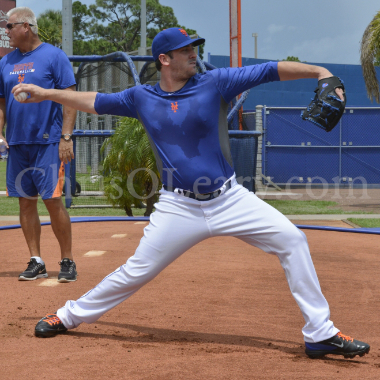|
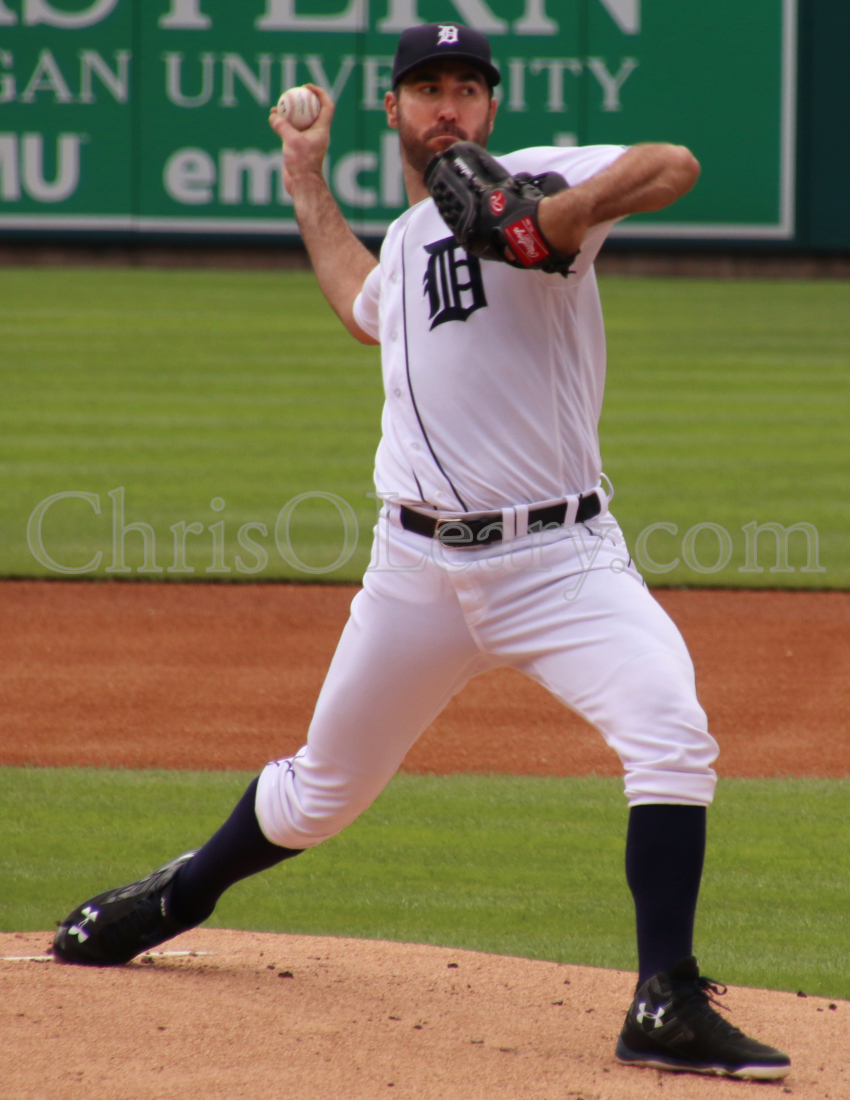 Pitching
mechanics has a problem in that it's no longer producing pitchers of
the caliber of Nolan Ryan and Tom Seaver. Pitching
mechanics has a problem in that it's no longer producing pitchers of
the caliber of Nolan Ryan and Tom Seaver.
And, worse, pitchers who get in sync with the conventional wisdom
about pitching mechanics inevitably break.
As the experience of Justin Verlander so clearly demonstrates.
Pitching Mechanics
The Problem
Justin Verlander's pitching mechanics enabled him to be as dominant and durable as
Nolan Ryan, Tom Seaver, Mariano Rivera, and Greg Maddux.
Then
Ron
Wolforth told Justin Verlander he needed to change his pitching
mechanics and move less like
Ryan and Seaver et al and more in line with the conventional wisdom
and modern pitching mechanics.
Causing JV to break.
A break I saw coming, well in advance...
November 13, 2019
I both expressed concern, and tried to warn Verlander, about the
changes he was being told to make to his pitching mechanics.
To no avail.
By Spring Training 2020, the die had been cast. Verlander had
moved to the modern pattern.
March 6, 2020
Verlander only started having arm problems — first, and twice,
having Triceps problems and then needing Tommy John surgery — when
he started listening to Ron Wolforth, bought into the conventional wisdom,
changed his pitching mechanics, and started moving like Harvey, Reyes,
and every other modern pitcher.
March 6, 2020
Which sums up the problem with modern pitching mechanics.
They involve taking more and more risks, mechanically speaking,
all the while hoping the new extreme conditioning
programs will balance out the increased risk of injuries.
All experience and evidence to the contrary.
In truth, modern pitching mechanics means turning out a steady stream
of hard throwing but fragile, generally reliever-grade arms.
But where are the starters?
And that's the big question.
How do you enable pitchers to throw HARD? Without taking stupid
risks? Thus enabling them to remain starting pitchers?
I've spent the past fifteen years working to answer those questions.
That starts with working to understand
the epidemic and what's changed in terms of how pitchers are
taught and how they move.
The Epidemic
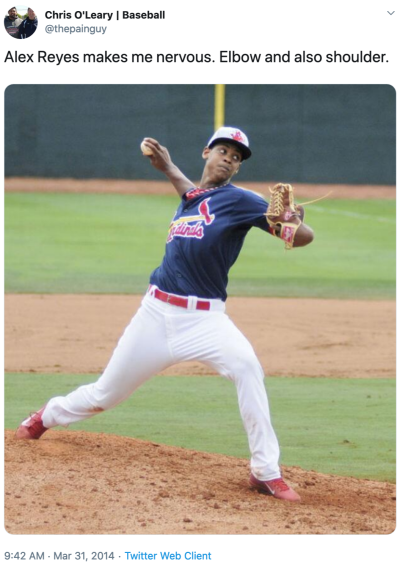 Why can't modern pitchers
like Alex Reyes stay healthy? Why can't modern pitchers
like Alex Reyes stay healthy?
All too predictably?
Because of their pitching mechanics.
Specifically, and as I explain at length in
The Epidemic, because of the tricks and shortcuts that are used by
pitching coaches to generate quick and easy velocity increases.
March 31, 2014
And that — all too predictably — lead to injury problems.
The Difference
The difference between...
1. Dominant and durable pitchers...
- Of the past...
- Nolan Ryan
- Tom Seaver
- Mariano Rivera
- Greg Maddux
- Of the present...
- Justin Verlander
- Aroldis Chapman
2. Modern, hard-throwing, but far more injury-prone pitchers like...
- Matt Harvey
- Joel Zumaya
- Mark Prior
...isn't complicated.
It can be seen with the naked eye.
In the pictures above, notice how, at Foot Plant, Justin
Verlander's pitching arm is UP while Matt Harvey's pitching arm is
FLAT.

Harvey, Seaver, Fernandez, and Ryan
CLICK TO ENLARGE
Similarly, in the composite above, notice how, while the pitching arms of Tom Seaver and Nolan Ryan are
UP when their shoulders start to turn, the pitching arms of Matt
Harvey and Jose Fernandez are FLAT or nearly so?
That's bad.
It's a problem I call
Flat Arm Syndrome.
And it's the all too obvious reason why modern pitchers both...
- (Often) Throw Harder.
- (Always) Struggle to Stay Healthy.
Classic vs. Modern Mechanics
What are the differences between Classic and Modern Pitching
Mechanics?
Classic Pitching Mechanics
Classic Pitching Mechanics are natural; they are how the vast
majority of pitchers — and throwers — move, if left alone. If not taught the Tricks
and Shortcuts that define and develop Modern Pitching Mechanics.

Justin Verlander's Pitching Mechanics
August 2016
Justin Verlander was the last, best example of Classic
Pitching Mechanics.
And JV broke when he changed his pitching mechanics to be more
consistent with the conventional wisdom.
Modern Pitching Mechanics
Contrary to what some say, the father of Modern Pitching
Mechanics is Paul Nyman. Tom House is just the guy who stole the
baby and raised and passed it off as his own.

Mark Prior's Pitching Mechanics
Mark Prior is the first example of a pitcher who
followed the Modern Pitching Mechanics model.
And who couldn't stay healthy as a result.
Scap Loading
What got Mark Prior was one of the keys of Modern Pitching
Mechanics; Scapular or just plain Scap Loading.
What's so — infuriating is probably the best word to describe how
I feel — is that, while you do so a lot of Scap Loading in modern
pitchers, you didn't see much of it in Justin Verlander.

Justin Verlander's Pitching Mechanics (2012)
Watch how far — how little — Justin Verlander's elbows,
and his Pitching Arm Side elbow in particular, get behind his shoulders.
Scap(ular) Loading is one of those things that is sold as a key
to Modern Pitching Mechanics but that was never a major part of
Classic Pitching Mechanics.
Positive Disconnection
As for Positive Disconnection, which is Driveline's big
contribution to Modern Pitching Mechanics, it's not what Justin
Verlander does.
Or did.
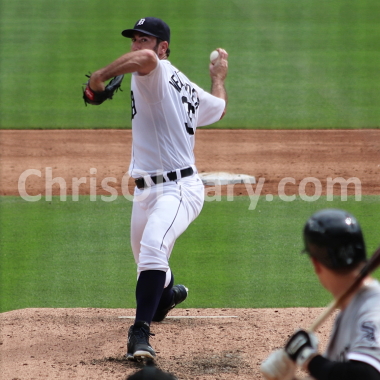
Justin Verlander's Pitching Mechanics (2016)
In the picture above of Justin Verlander, at Stride Foot Contact,
notice how his pitching arm is UP, his shoulders are closed, and his
Glove Side elbow is in line with the target.
Of all the changes Verlander made in 2020, changes that in my
opinion contributed to his needing Tommy John surgery, adopting
Driveline's idea of Positive Disconnection is at the top of my list.
It caused obvious changes to Verlander's Timing.
Changes I tweeted about as soon as I saw them.
And that led me to change my opinion of Verlander's mechanics and
prospects.
Before he broke and needed Tommy John surgery.
Timing
Scap(ular) Loading, Positive Disconnection, and all the
other ideas that comprise Modern Pitching
Mechanics are problematic because of their impact on Timing.
The position of the pitching arm when the shoulders start
rotating and the pitching arm starts to come under load.
Dominant and durable pitchers have exceptional
Timing and consistently get to the
Ready Position. In contrast, modern pitchers increasingly exhibit flaws like
Flat Arm Syndrome and the
Tommy John Twist.
That DOES allow them to throw harder, at younger ages.
But there's No Free Lunch.
The tricks and shortcuts that are at the center of Modern
Pitching Mechanics work by overloading the pitching arm.
These differences explain why
Matt Harvey and
Jose Fernandez quickly experienced both dominance, and injury problems, early on in
their professional careers while Tom Seaver and Nolan Ryan were equally dominant
and far more durable.
The Root Cause
The root cause of the problem is that...
- The definition of
proper pitching mechanics has changed.
- How pitching mechanics — and, more fundamentally, throwing mechanics — are being taught has changed.
I'm not just talking about the
Inverted W,
although that is increasingly, inadvertently, and again becoming an important and relevant topic.
Instead, I'm talking about all of the different
problematic pitching cues and drills that "work" by creating
a
Timing problem.
There's no question pitchers at all levels are throwing
harder than ever.
However, the latest
research into pitching mechanics suggests that these changes to
how throwing and pitching are taught are contributing to the
rising injury rates to pitchers.
How Things Have Changed
To fix the problem with how pitching mechanics are taught,
and reverse the course of the
pitcher injury and tommy john surgery epidemic, we
first need to understand how things have changed in terms of
throwing and pitching mechanics and how they are taught.
I grew up hearing stories about Bob Gibson...

Bob Gibson
...and Tom Seaver...
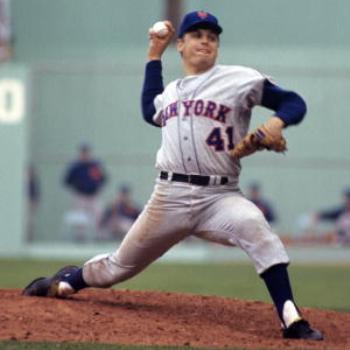
Tom Seaver
I was able to watch Nolan Ryan, on TV, if not in person.

Nolan Ryan
As my kids got older, I focused my attention on Greg Maddux,
his pitching mechanics,
and the ridiculous ways he could get the ball to move...
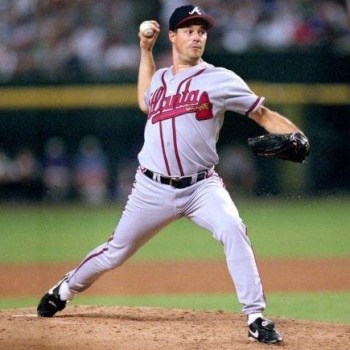
Greg Maddux
...and Mariano Rivera and his cutter.
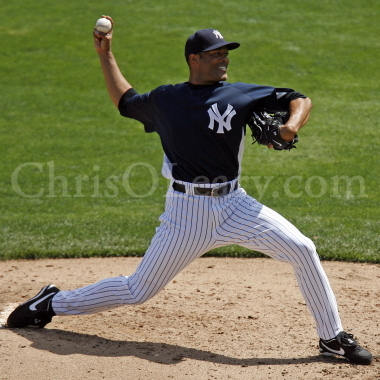
Mariano Rivera
The more I studied pitchers and pitching mechanics, the more
obvious it became to me that modern pitchers looked — and moved
— differently than the pitchers I idolized and studied ad
nausea.
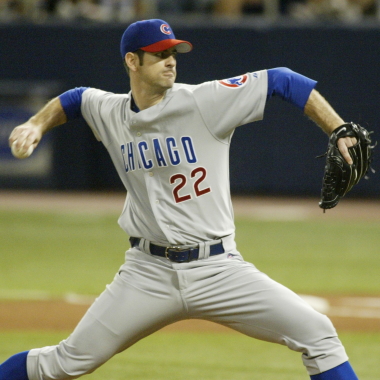
Mark Prior
Mark Prior
and his pitching mechanics were part of it, but he wasn't the only one.
Living in St. Louis, Anthony Reyes quickly caught my eye due to
his pronounced — even worse than Mark Prior's —
Inverted W.
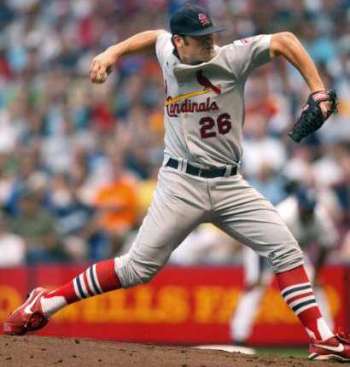
Anthony Reyes
Yes, there were guys like Justin Verlander...
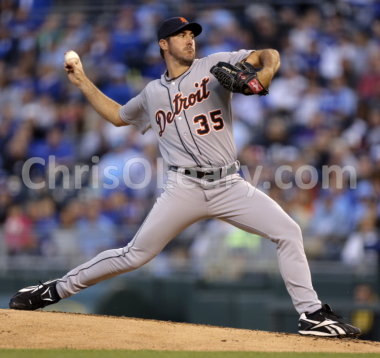
Justin Verlander
...but there seemed to be fewer and fewer pitchers who
displayed the pitching mechanics of the greats.
What I came to understand over time was that the differences
in how pitchers moved were due to differences in how they were
being taught.
Matt Harvey
As I discuss in my
analysis of Matt Harvey's pitching mechanics, in my opinion
the root cause of Matt Harvey's elbow — and eventually,
shoulder — problems is something called the Power T. If you got
here by Googling "pitching mechanics," "proper pitching
mechanics," or something similar, you likely came across a piece
with these two pictures illustrating what are (supposedly)
proper pitching mechanics.
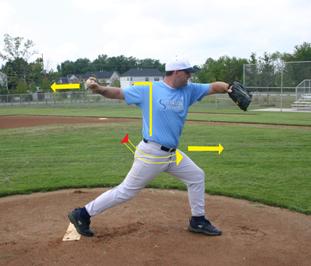
Power T
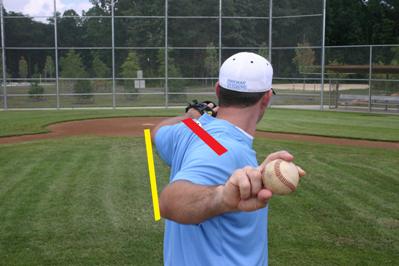
Power T
I assume that Matt Harvey was taught something similar.

Matt Harvey's Power T
The problem is that the Power T works by creating a
Timing problem; the pitcher's arm isn't up and in
the correct position when their front foot plants and their
shoulders start rotating.

Matt Harvey's Power T
The Power T works — for a while — by overloading the arm;
by pushing it past the red line. That will often
yield quick velocity increases but, in my experience, will also
lead to elbow and/or shoulder problems.
I believe that people who teach the Power T think they are
teaching pitchers to throw like Roy Halladay.
But they aren't.
Jose Fernandez
My
analysis of Jose Fernandez's pitching mechanics discusses my
belief that other common cues are compromising his pitching
mechanics and are putting his career in jeopardy.
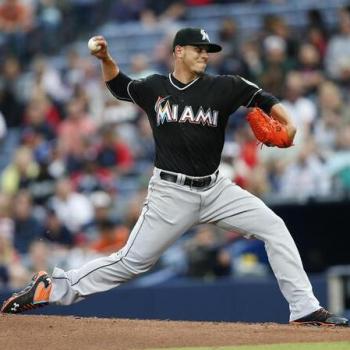
Jose Fernandez
I say this in part because, of
all my pitcher injury
predictions, my...
...unfortunately proved to be the most accurate, which
suggests that the problem with Jose Fernandez's pitching
mechanics is extremely serious.
Where to go from Here
I have put together a number of free and other pieces for
people who want to dive into the topic of pitching mechanics.
Pitcher Injury Predictions
Since 2006, I have been making predictions about which
pitchers I think are more, and less, likely to experience injury
problems.
I mention this because I believe it establishes that I have a
deep understanding of pitching mechanics and injuries; you have
to understand a system in order to make accurate predictions
about it.
Professional Pitcher Analyses
In order to help people understand how major league pitchers
actually throw the ball, I have created a
number of analyses of the
pitching mechanics of major league
baseball pitchers, including...
|




